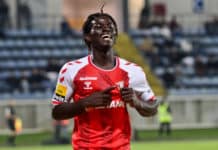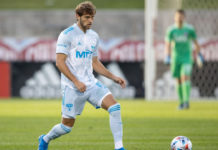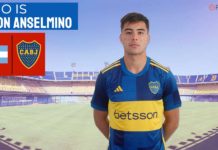There was deftness in every step.
Immaculate precision in every touch.
And, a rhythmic smoothness in every run.
He was small, yet swift and sharp.
He did the impossible, day after day.
He blessed Barcelona, Argentina, Napoli, Newell’s, and every other team that he represented.
He was a hero throughout.
Years later, as he stood by the pavilion railing inches away from falling, cheering his heart out for these teams- The impact was the same.
People were still in awe of him.
This is who Diego Armando Maradona was.
An undying epitome of passion, on and off the Pitch.
El Diez
THE MAN
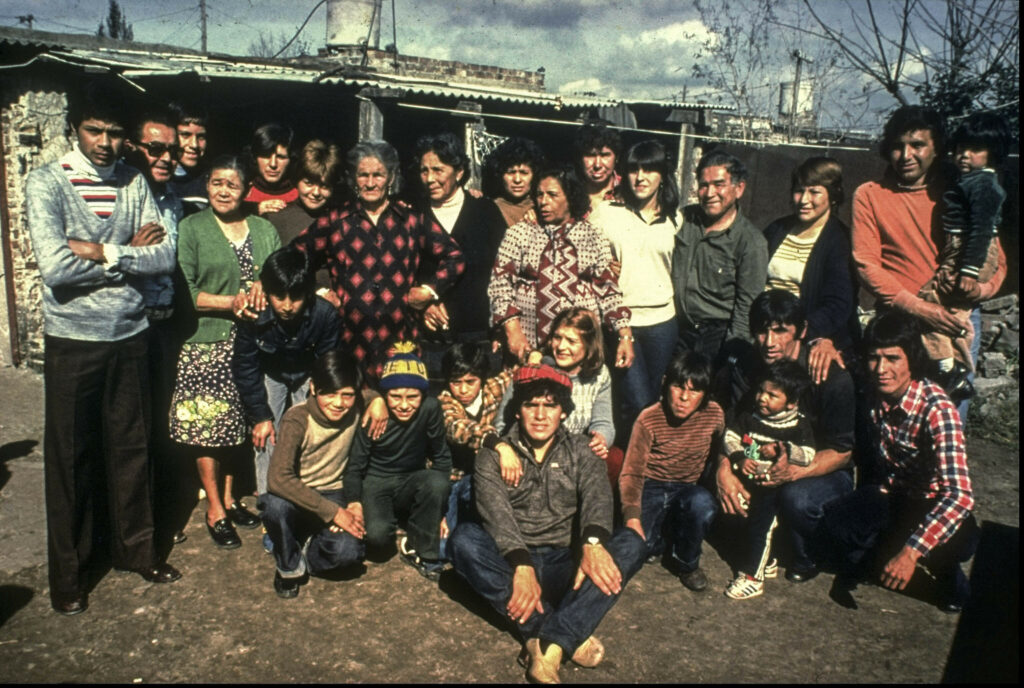
30th October 1960, Lanus province of Buenos Aires witnessed the birth of the country’s Superhero-to-be.
[espl_pullquote]Neapolitans would say, ci ha levato gli schiaffi da faccia — “He removed the slaps from out of our faces”.[/espl_pullquote]
This superhero got his first break in professional football in 1976 at the age of 16 for Argentinos Junior.
People around were skeptical for he was the youngest player in Argentina’s Premier division.
But Alas, Diego cleared all their doubts minutes into the game.
He received the ball to his feet and with a single touch, turned and put it right through Juan Domingo Cabrera’s legs as the world stood still.
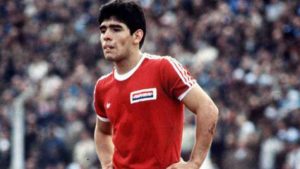
“That day I felt I had held the sky in my hands.”
Diego Maradona after his debut in 1976
This was the electric start to his career.
His dribbling shattered defences and blew the audience’s minds. He was the topic of conversation in every bar of Argentina.
He got his national team debut in 1977 and was later signed by FC Barcelona in 1981 for a world record transfer fee.
An incredible header by Quini… 🤩
…Spectacular play by Maradona 💙❤️🔙 1983/84 pic.twitter.com/Zwz3lqGE26
— FC Barcelona (@FCBarcelona) November 29, 2020
In his two seasons with the Catalans, Maradona lifted 4 trophies, scored 22 goals, and became a European favourite.
Next in line to sign him were Italian giants Napoli.
Per Sempre Napoli
ITALY CALLING
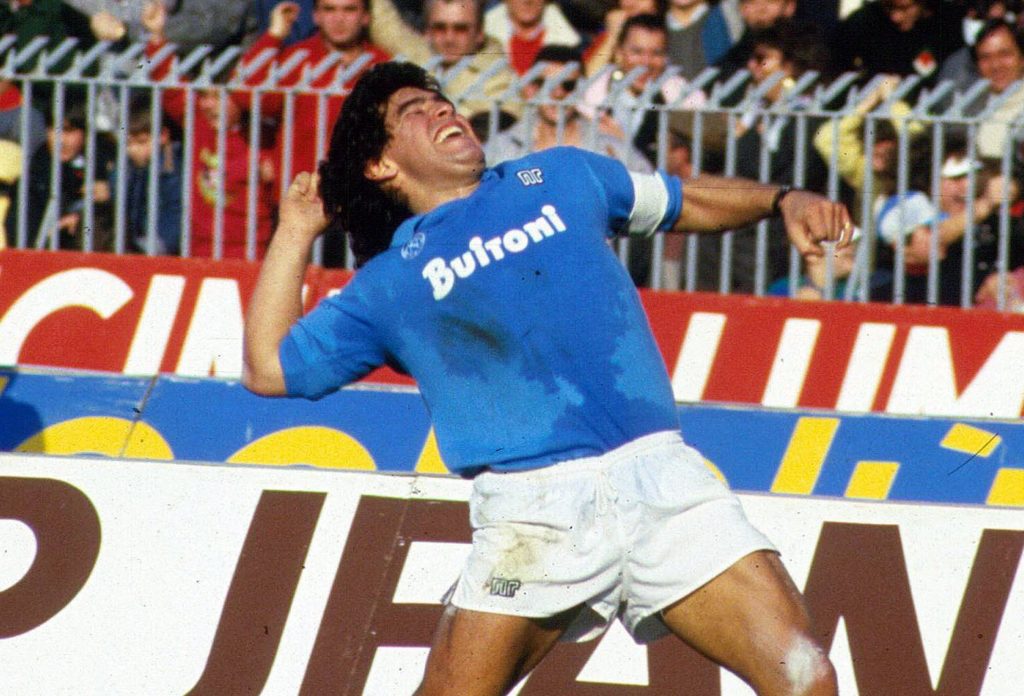
Back in the day, Napoli, for an emerging superstar, was not the place to be. The town was extremely poor and backward, struggling with epidemics and natural disasters.
It was a place looked down upon by the rest of Italy.
[espl_pullquote] Maradona personally paid 12 million lira to ensure that the entire team was covered by insurance and they could play a charitable fundraiser game to help the poor in Acerra. This was his love for Napoli. [/espl_pullquote]
It was a team that was asked to “Burn in the Vesuvius” and called “Cholera” in the opponent’s home.
But all of this changed.
Changed with the arrival of a man who would be regarded as high as God in this town.
The same San Siro that earlier booed the Napoli blues were now bursting with whistles – all to welcome the greatest player of Napoli and the world: Diego Maradona.
The tables had turned.
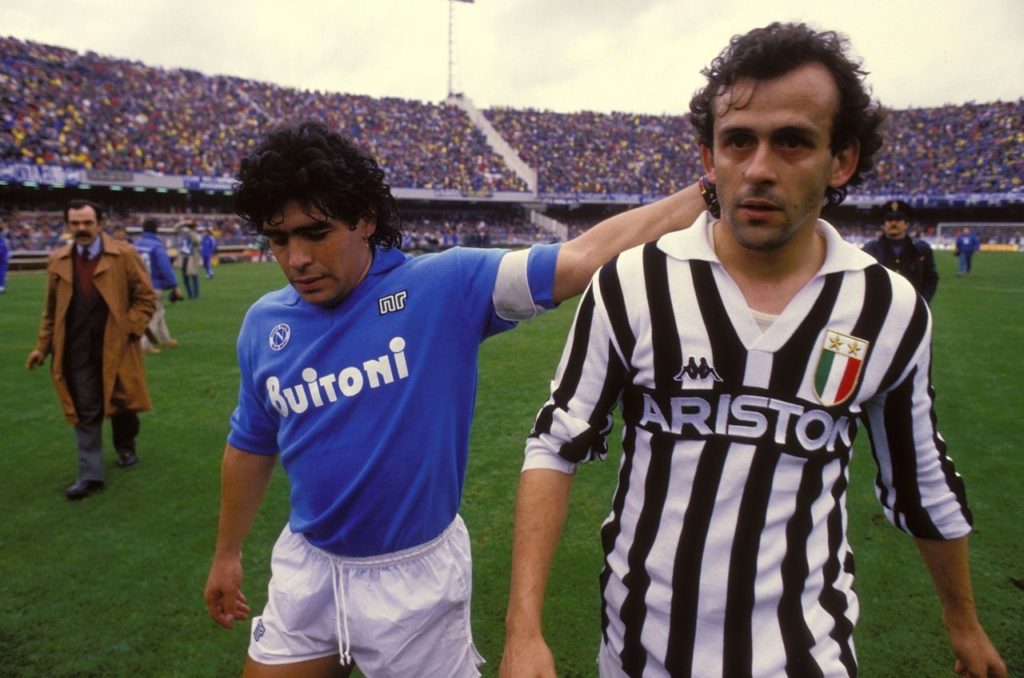
The intimidated and oppressed Italians started to hold their head high. Everyone, from the Mayor to the sanitation workers started to embrace the game for it was a form of redemption for them. Having Maradona on the pitch gave them their chance to stand against the rest of Italy with their head held high.
The Argentine soon became a favourite and inherited captaincy of the team.
He later led them to their first-ever Serie A victory in 1986-87. This victory was more significant than one can realize today, for it came during a period when the tensions between North and South Italy were at their peak.
[espl_pullquote] The Neapolitans held mock funerals for Juventus and Milan, burning their coffins, their death notices announcing ‘May 1987, the other Italy has been defeated. A new empire is born! [/espl_pullquote]
In the following years, Napoli finished runners up twice and lifted the title once again in 1989-90. They also won the Copa Italia in 1989, however, there was more on the cards.
In 1989 Napoli made it to the European Cup final against VFB Stuttgart.
The first leg of the final was held in Italy and finished 2-1 for Napoli after Diego scored a penalty. The second leg in Stuttgart however, was the big test. With the rest of the world supporting Germany, Napoli remained undeterred and finished the game 3-3 with Maradona assisting Ciro Ferrera’s third goal.
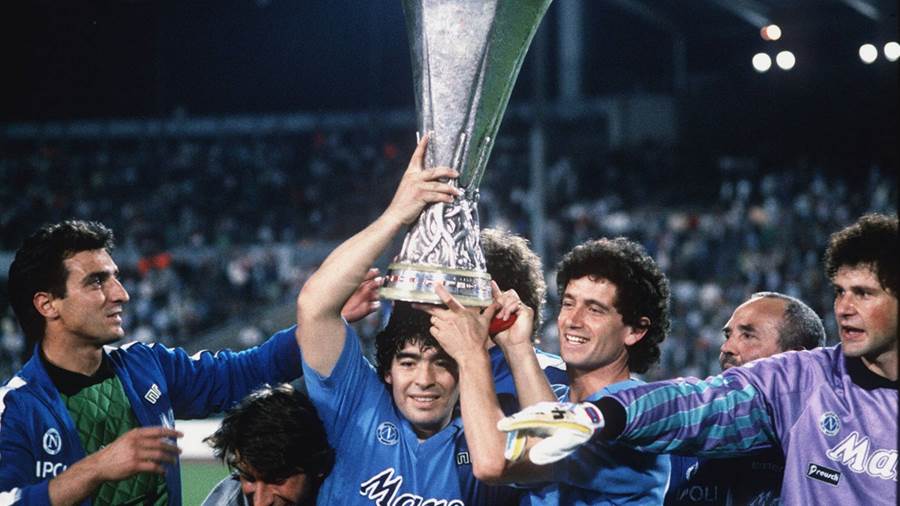
From the ruins of Italy, Napoli were now the Champions of Europe and Diego Maradona their Hero.
In his seven years over there, he scored 81 goals and etched his name deep in the club’s history.
Or as Neapolitans would say ci ha levato gli schiaffi da faccia — “He removed the slaps from out of our faces.”
While this is enough to illustrate the Neapolitan’s love for Maradona, numerous stories show us Diego’s love for the side.
In 1984, Maradona agreed to play an exhibition match in the slum of Acerra to raise money for poor children and a suffering fan Pietro Puzone.
Acerra then was well known for becoming the World’s Largest Dumping Ground. The place was grim and the pitch muddy.
The Napoli board however outright refused to let them for a game being played in such conditions.
Maradona, however, rose to the occasion and personally paid 12 million lira to ensure that the entire Napoli team was covered by insurance and he could and to help the poor in Acerra.
Half God- Half Devil
ARGENTINA
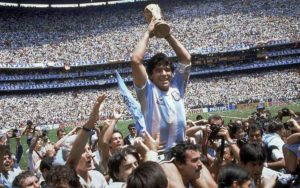
Argentina has always been crazy about football, but Maradona’s start there was not as smooth as it sounds.
He made his national team debut at 16 years, but was considered “too young” and not called up again. He went on to play for the youth national team and the 1979 FIFA Youth World Cup with Argentina.
He was the star of the tournament and had six goals in six games to his name.
[espl_pullquote] A recent documentary on his life depicting behind the scenes shows videos of him smoking mountains of substance and consuming himself in alcohol, and yet showing up on the pitch for a match the very next morning.[/espl_pullquote]
Then came his calling from the Senior team. He featured in the 1979 Copa America and became a sensation for the country.
He was a crucial part of Argentina’s 1982 world cup squad and played every minute of Argentina’s five games. The 22-year-old had 2 goals and 1 red card to his name.
Leaving his far-from-best performance in the 1982 World Cup behind, Maradona featured again in 1986. The story, however, was completely different this time.
He was the captain of his team and the most dynamic player in the world.
Argentina was on a roll and Diego Maradona beyond-impressive.
The highlight here was the quarter-final against England. The game dropped jaws and broke hearts all at once.
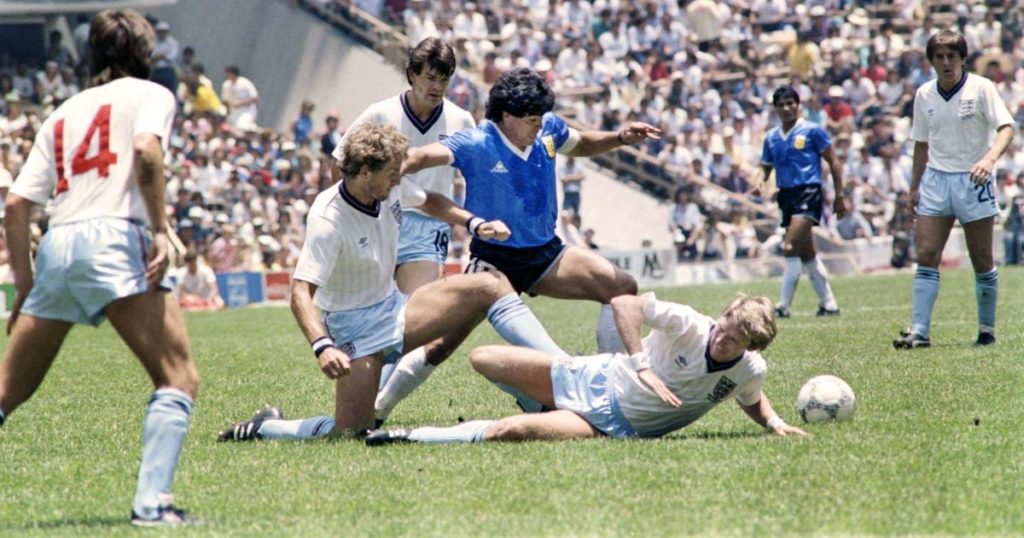
It started with the ‘Goal of the century’ that Maradona scored for Argentina.
Running from the half-line, pivoting through the opposition midfield, and dodging the entire English defence with an effortless-ease, Diego put the ball in the back of the net!
With 1-1 on the scoreboard, however, came the dark moment of the game.
In a flying delivery into the box after the 70th minute, Maradona jumped to clip his head but ended up scoring with his hand.
The referee, however, missed it in a blink and the Goal stood. The goals that made Maradona Half Angel- Half Devil.
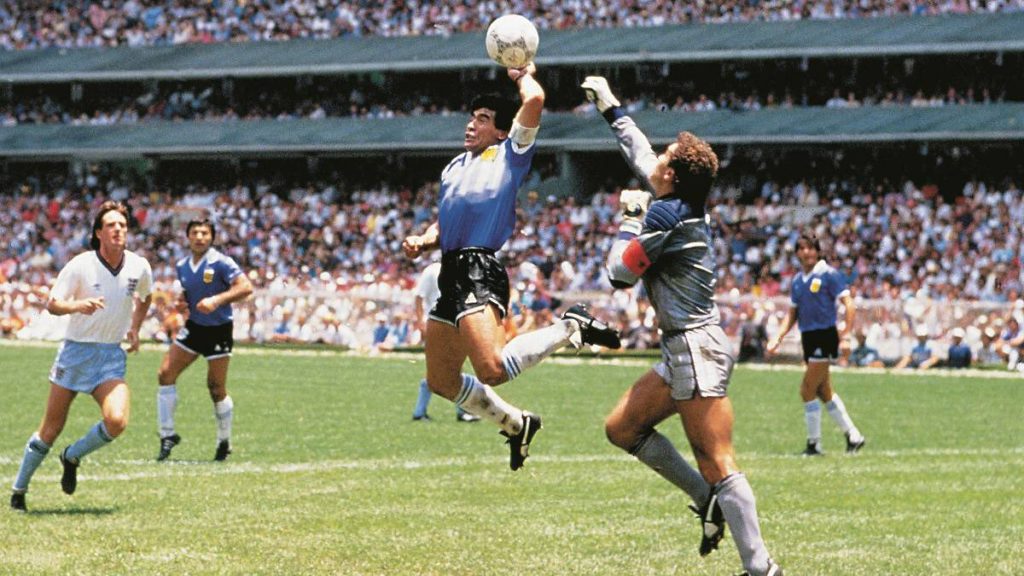
Argentina later progressed well and beat Germany in the Final to lift the World Cup.
At the heart of this victory was Diego Maradona- with 90 dribbles and a direct involvement in 10 of Argentina’s 14 goals in the tournament.
A remarkable performance indeed!
Maradona again featured in the 1990 World Cup, but Argentina was knocked out in the Quarter Final itself.
In 1994 the legend returned. He scored his last goal against Greece and celebrated in front of the camera before failing a drug test and being sent home from the World Cup.
“I need them to need me”
THE DARK SIDE
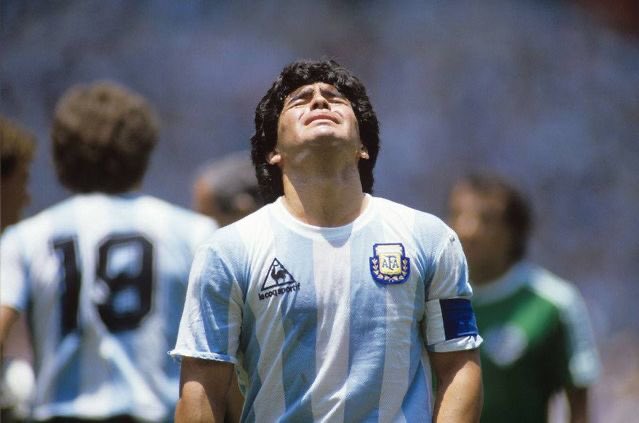
Failing the drug test for Cocaine in 1994, Maradona had been banned from football for 15 months.
The fans were devastated to realize that their Superhero was neither a ‘Super’ nor a ‘Hero’ anymore.
This was a disgrace, a finding that brought him down from the godly thrown that he had been put on.
Gradually, more came into light.
[espl_pullquote] Recently, Maradona had been undergoing treatment for withdrawal symptoms of drugs and alcohol and was under behaviour therapy before being detected with subdural hematoma- a blood clot in his brain. [/espl_pullquote]
Maradona had always been famous for partying hard.
A recent documentary on his life depicting behind the scenes narrates incidents and shows videos of him smoking mountains of substance and consuming himself in alcohol, and yet showing up on the pitch for a match the very next day.
His performance though was never adversely impacted by such behaviour. He remained the best player on the pitch, but his image was in shambles.
With an unpleasant goodbye, he departed from Napoli in 1992 to join Sevilla. He then left Sevilla after a single season and returned to Argentina where he played for Newell’s Old Boys and Boca Juniors in a two-year stint.
This was the not so bright end of his Glittering career.
He tried his hand as a manager, but could not succeed.
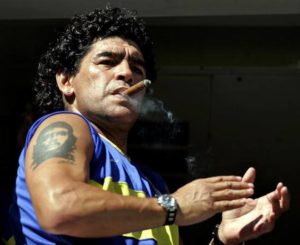
He was now a Boca Junior’s fan and a punctual and passionate spectator.
He had been undergoing treatment for withdrawal symptoms of drugs and alcohol was under behaviour therapy before being detected with subdural hematoma- a blood clot in his brain.
This blood clot had been successfully removed with surgery in the first week of November, days before Maradona finally passed away in his sleep with a heart attack.
https://twitter.com/FootTheBall/status/1332261745889460224?s=20
THE END
“This was a story I never wanted to publish!”
Julio Chiappetta
The Journalist who broke the news of Maradona’s death
There was a gloomy silence on that November afternoon.
With broken hearts, fans fell to the ground. They lit up his mural in Napoli with candles and organized a march.
Napoli announced they were renaming their San Paolo stadium Diego Aramando Maradona Stadium.
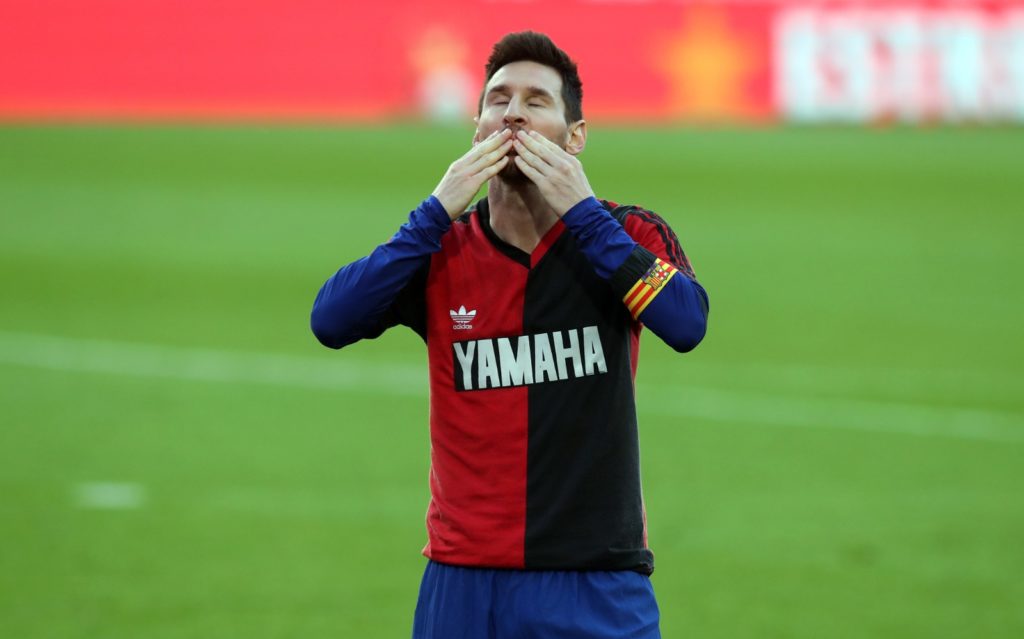
All the football games observed silence in his memory.
Lionel Messi and Lorenzo Insigne dedicated their goals to him.
None of this, however, will ever compare to what Diego gave, to the fans and the game. All of this is what will help us keep him alive in our hearts, forever!
Goodbye to the Legend, Diego Armando Maradona.
Rest in Peace.
'Everything related to Maradona is a source of inspiration for those who feel him and carry his soul,' said Matias Disciosia, who has a huge tattoo of Maradona's name and the number 10 on his back 5/6 pic.twitter.com/Afx7s7mtR8
— Reuters (@Reuters) November 30, 2020


